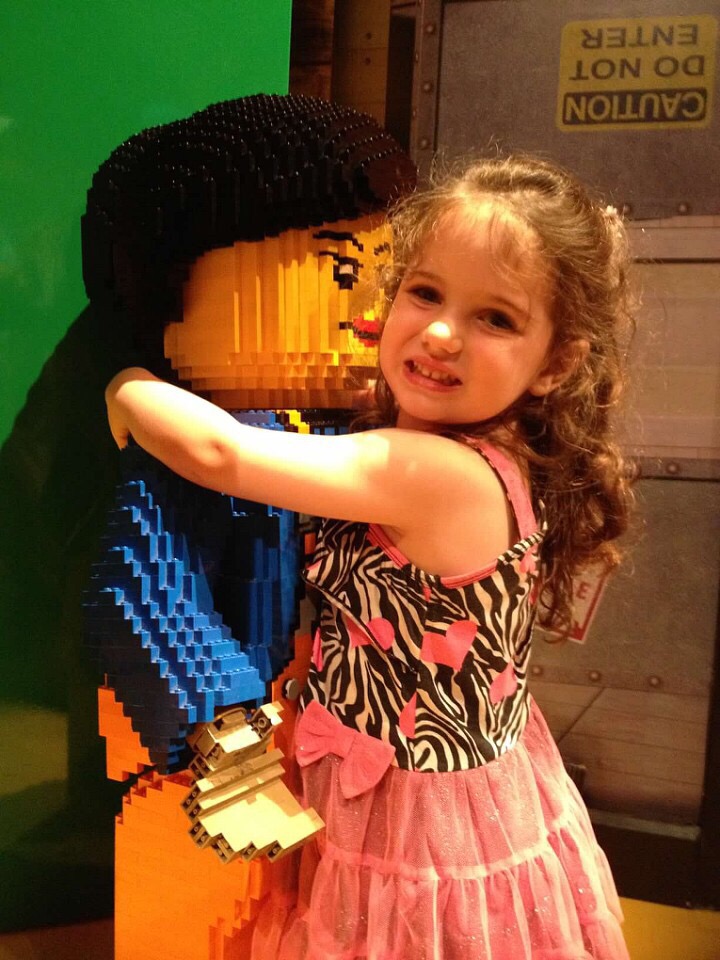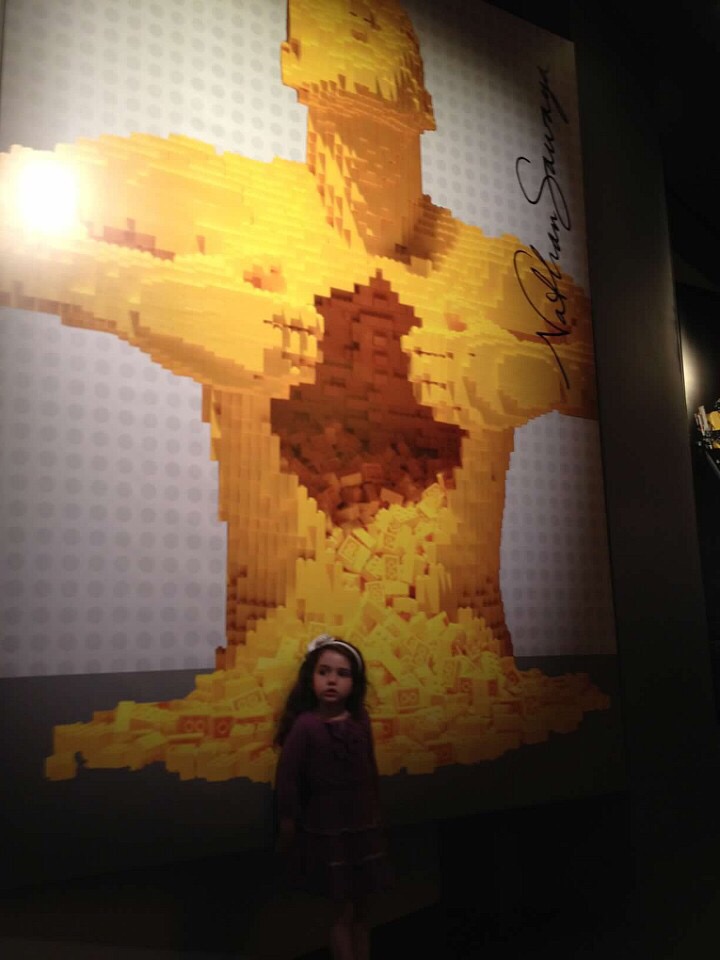A few years ago I took my daughter to “The Art of the Brick” expo in New York City. At first, my husband and I were pretty skeptical about how interesting it would be. What could you possibly do with Legos that hasn’t been done before? We have been to the Legoland in Yonkers, where whole cities were built out of Legos, and the Toys R Us at Times Square, with its famous Lego Empire State Building.


 As you may imagine, we were completely dumbfounded once we saw The Art of the Brick. Nathan Sawaya has an amazing talent for portraying world famous paintings and sculptures by just using Legos. One of the things that really struck me was how little detail is necessary for a picture to come together. The Lego depictions of well known masterpieces looked like somebody took a highly pixelated photo of the painting, with just enough detail to make it recognizable.
As you may imagine, we were completely dumbfounded once we saw The Art of the Brick. Nathan Sawaya has an amazing talent for portraying world famous paintings and sculptures by just using Legos. One of the things that really struck me was how little detail is necessary for a picture to come together. The Lego depictions of well known masterpieces looked like somebody took a highly pixelated photo of the painting, with just enough detail to make it recognizable.
Here is an example of the “Girl with a Pearl Earring” painting made out of Legos to show what I mean. 
People have actually studied the lower limits of resolution necessary for objects to be recognized. When it comes to faces, especially familiar faces, the minimal resolution appears to be as low as 7 X 10 pixels as described in more detail here and here. Despite what would appear to be a very poor resolution, people are able to recognize what they know.
The same principle applies to confocal microscopy. When you just start to look for an image of your sample, you are likely to start out with a relatively blurry image. As you continue to fine tune the settings, beautiful cellular structures begin to appear in bold, bright colors. You may increase your resolution for a publication quality image, but at the end of the day all images still consist of individual pixels, each of which carries important information for the whole image to be recognizable and informative for the scientist. Converting confocal images into 3D renderings made of beads allows me to capture this quality. Each bead acts like a pixel and is necessary for the whole object to come together and show its precise structure and identity. Using very fine beads allows me to capture the image at a “high resolution” and makes it that much more pleasurable.
While I was composing this post, I attended a meeting at New York Academy of Sciences. Not only did I run into a post board with my face and an excerpt from my interview on it…  What caught my attention was actually much more subtle. The wall paper in the lecture hall was showing images of birds that were gradually losing resolution, symbolizing how much scientific knowledge is still unknown. The gradual transition of the images really struck a chord with me!
What caught my attention was actually much more subtle. The wall paper in the lecture hall was showing images of birds that were gradually losing resolution, symbolizing how much scientific knowledge is still unknown. The gradual transition of the images really struck a chord with me!
Come check out my work at NeuroBead and follow me on Instagram!


Ha. Cute! Hope you and your family have a wonderful week.
LikeLike